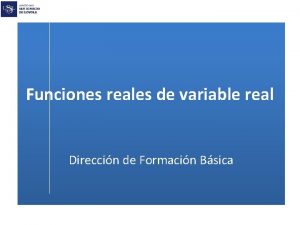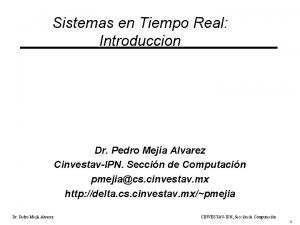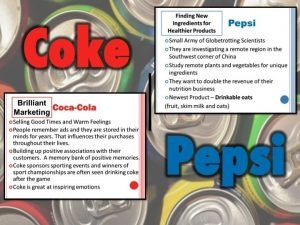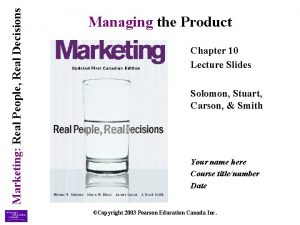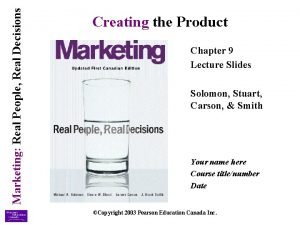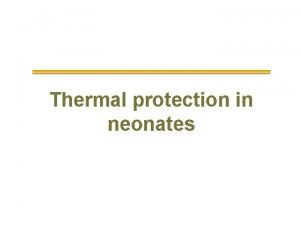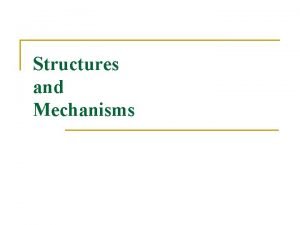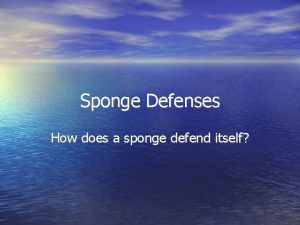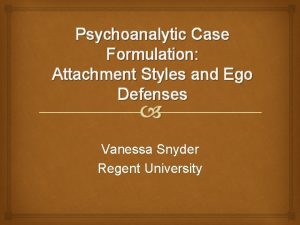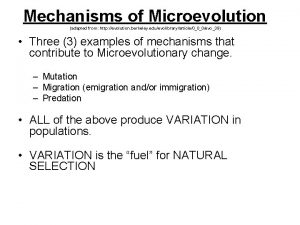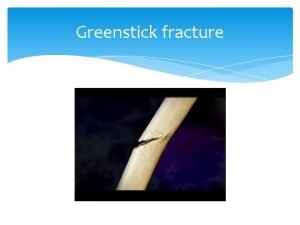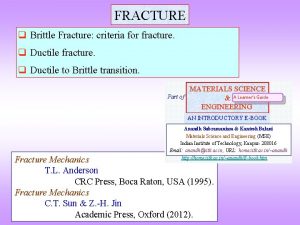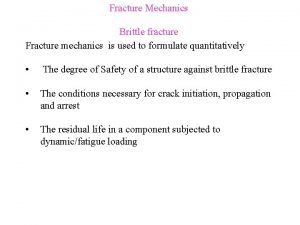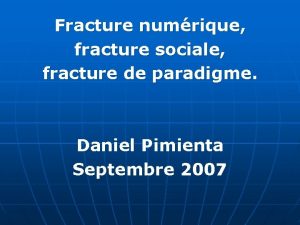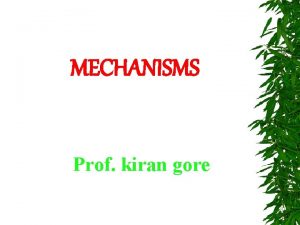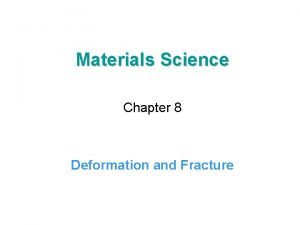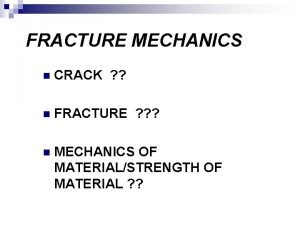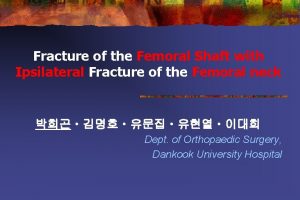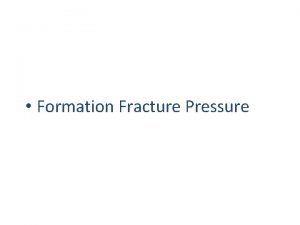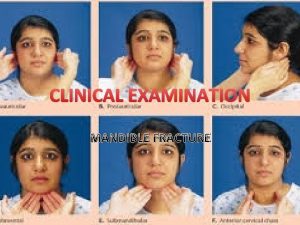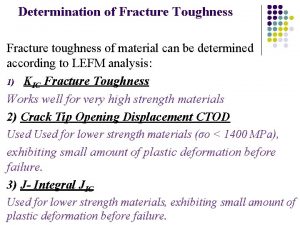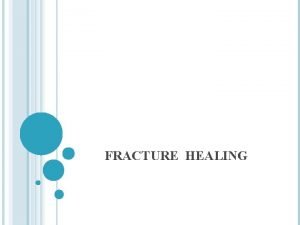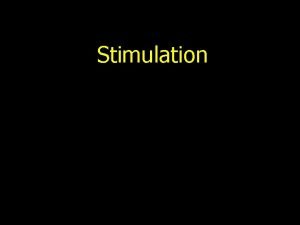OUTLINE 3 Fracture mechanisms in real materials Fracture































![3 - Fracture mechanisms in real materials log[uz(nm)] 0. 48 -2. 77 Depression Notch 3 - Fracture mechanisms in real materials log[uz(nm)] 0. 48 -2. 77 Depression Notch](https://slidetodoc.com/presentation_image_h2/daa3d9e04c015399fd26c0bb2b2f118a/image-32.jpg)






- Slides: 38

OUTLINE 3. Fracture mechanisms in real materials § Fracture of crystals: Different fracture mechanisms The importance of plasticity § Quasi-brittle fracture: R-curve and size effect § Sub-critical fracture in silicate glasses: stress corrosion… Brittle or quasi-brittle? The Chinese University of Hong-Kong, September 2008

3 - Fracture mechanisms in real materials Cleavage of single crystals: rapid, crystallographic (M. Marder, Austin University, USA single silicon crystal) Metallic alloys: Cleavage Ductile Intergranular

3 - Fracture mechanisms in real materials Plasticity in metals Edge dislocation

3 - Fracture mechanisms in real materials Stress corrosion in metallic alloys: 316 L steel & liquid mercury (L. Medina, D. Gorse et al. , 07)

3 - Fracture mechanisms in real materials Dimples around Si particles in an Al. Si alloy (C. Prioul, by Centrale France) Void formation fracture. Paris, of brittle precipitates In an aluminum alloy (C. Prioul, Centrale Paris, France)

3 - Fracture mechanisms in real materials Ti 3 Al-based alloy

3 - Fracture mechanisms in real materials Fracture surface polycristalline Ni 3 Al The Chinese University of Hong-Kong, September 2008

3 - Fracture mechanisms in real materials Irwin’s estimate of the plastic zone size - Perfect plasticity (no work hardening) - No angular dependence - Plane stress Effective (notional) elastic crack : s sy. S e Elastic Plastic y sy. S x Dan a ry Plastic zone size Actual stress field after local yielding

3 - Fracture mechanisms in real materials Dan=ry KI= s p (a+Dan) KIc 2 1 RC=2 ry= ------ (------- ) sy. S p Dugdale’s estimate of the plastic zone size KIc 2 p RC=2 ry= ------ (------- ) sy. S 8 Shape of the plastic zone Von Mises criterion: (s 1 -s 2)2+ (s 2 -s 3)2+ (s 3 -s 1)2=2 sy. S 2

3 - Fracture mechanisms in real materials Quasi-brittle fracture: wood, concrete, rocks… E. Landis & al. No intrinsic plasticity Extended FPZ: microcracks • release of stored energy • stress redistribution S. Morel & al. The Chinese University of Hong-Kong, September 2008

3 - Fracture mechanisms in real materials Paper creep (Santucci, Vanel & Ciliberto) The Chinese University of Hong-Kong, September 2008

3 - Fracture mechanisms in real materials FPZ size Screening of the external stress field Perfectly brittle case Quasi-brittle case: R-curve behaviour The Chinese University of Hong-Kong, September 2008

3 - Fracture mechanisms in real materials Experimental resistance curves for spruce R(J/m 2) (S. Morel et al. 01) Da(mm) The Chinese University of Hong-Kong, September 2008

3 - Fracture mechanisms in real materials Size effect on the stress to failure: (Bažant 04) { Size of the notional crack : FPZ size Short cracks: Long cracks: The Chinese University of Hong-Kong, September 2008

Limestone Sea Ice Si. C a 2 a L Carbon Composite Concrete 2 L Vinyl Foam Concrete (L/L 0)

3 - Fracture mechanisms in real materials Stress corrosion fracture of silicate glasses Brittle or quasi-brittle? KIc=0. 8 MPa m Intrinsic strength: Vacuum sc≈10 -12 GPa Humid air sc≈3 -4 GPa RC ≈1. 5 -2 nm RC ≈13 -23 nm The Chinese University of Hong-Kong, September 2008

3 - Fracture mechanisms in real materials Crack propagation in a humid environment Same behaviour for mica, sapphire… Same ammonia on glass Wiederhorn et al. (1967, 1970) Higher humidity rate Transition to dynamic fracture III 10 -5 m/s II Diffusion controlled I Chemically controlled 10 -13 m/s KI KIc

3 - Fracture mechanisms in real materials Stress corrosion: classical theory (Charles & Hillig 65, Wiederhorn 67, Michalske & Freiman 82) Hydrolysis: H 2 O+(-Si-O-Si-) (-Si-OH. HO-Si-) The Chinese University of Hong-Kong, September 2008

3 - Fracture mechanisms in real materials Si Si Si O H H O O H H H O O Si Si Si

3 - Fracture mechanisms in real materials Stage I chemically controlled Molecular reaction rate at the tip: Energy barrier to break the Si. O bond Energy barrier to reform the Si. O bond DF±=DF∙ a(G-G*)+o(G-G*) ± G ~> G*

3 - Fracture mechanisms in real materials 45% humidity The Chinese University of Hong-Kong, September 2008

3 - Fracture mechanisms in real materials Griffith’s criterion: G=G at the onset of fracture In humid air, G=G* V=0 G=G*: replaces Griffith’s criterion G*<G: easier to break in the presence of water! The Chinese University of Hong-Kong, September 2008

2, 5 cm cracks In situ AFM observations 5 mm

In situ AFM observations amorphous aluminosilicate V=3. 10 -10 m/s 75 nm Collaboration with F. Célarié, L. Ferrero & C. Marlière (Ld. V , Montpellier University)

3 - Fracture mechanisms in real materials In situ AFM observations Pure silica glass V=3. 10 -11 m/s

3 - Fracture mechanisms in real materials FRASTA METHOD (Kobayachi & Schokey 87) Final image: definition of contours Relative movement of the contours: going back in time. The Chinese University of Hong-Kong, September 2008

3 - Fracture mechanisms in real materials The Chinese University of Hong-Kong, September 2008

FRASTA reconstruction Experiment

3 - Fracture mechanisms in real materials + H 2 0 Low fracture toughness regions 0 = 1/d 03 0 exp (K 2 I/K 20) V V 0 exp (K 2 I/K 20) 0 V / V 0 0 for V > Vstage. II d d 0 (Vstage. II / V)1/3 Elastic energy G ~ KI 2 Nucleation sites = 1/d 3 Vstage. II 10 -5 m/s (Wiederhorn et al. , 67) Dynamic fracture d 0 ~ 1 nm (C. Rountree et al) Stress corrosion V=10 -10 m/s => d ~ 40 nm V=10 -11 m/s => d ~ 100 nm The Chinese University of Hong-Kong, September 2008

3 - Fracture mechanisms in real materials Plane stress linear elasticity : 20 nm r (nm) 80 nm r (nm) x (nm) dz (nm) 1 mm z r -0. 5 x (nm) Departure from r-0. 5 within the damage zone (20 nmx 80 nm) The Chinese University of Hong-Kong, September 2008

3 - Fracture mechanisms in real materials z y z Crack tip Rc x x 280 nm The Chinese University of Hong-Kong, September 2008
![3 Fracture mechanisms in real materials loguznm 0 48 2 77 Depression Notch 3 - Fracture mechanisms in real materials log[uz(nm)] 0. 48 -2. 77 Depression Notch](https://slidetodoc.com/presentation_image_h2/daa3d9e04c015399fd26c0bb2b2f118a/image-32.jpg)
3 - Fracture mechanisms in real materials log[uz(nm)] 0. 48 -2. 77 Depression Notch 0. 7479 1/r log[uz(nm)] 120 nm Cumulated porosity 120 nm 0. 1 0. 2263 r(nm) 100 r (nm) The Chinese University of Hong-Kong, September 2008

3 - Fracture mechanisms in real materials Process zone size Rc (nm) Along the direction of crack propagation ln(V*/V) Perpendicular to the direction of crack propagation V (m/s) The Chinese University of Hong-Kong, September 2008

3 - Fracture mechanisms in real materials Kinematics of cavity growth B 4 A t (h) A 1. 5 nm 2 Image 1146 Image 50 Image A B C xx 6 C -1. 5 nm 100 200 x (nm) 300 The Chinese University of Hong-Kong, September 2008

Positions of fronts A, B, C (nm) 3 - Fracture mechanisms in real materials Intermittency of propagation “Macroscopic” velocity 3 10 -11 m/s! C (foreward front cavity) V = 9 ± 8 10 -12 m/s. Front arrière de la cavité V = 8 ± 5 10 -12 m/s B (rear front cavity) V= 8 ± 5 10 -12 m/s A (main crack front) V = 3 ± 0. 8 10 -12 m/s The Chinese University of Hong-Kong, September 2008

3 - Fracture mechanisms in real materials Position of the main crack front (A) 1 st coalescence Velocity 3 10 -11 m/s 2 nd coalescence Velocity 3 10 -12 m/s Time

3 - Fracture mechanisms in real materials (J. -P. Guin & S. Wiederhorn) No plasticity, but what about nano-cracks? …Fracture surfaces… The Chinese University of Hong-Kong, September 2008

Summary - Dissipative processes: damage formation ∙ Fracture of metallic alloys: the importance of plasticity ∙ Quasi-brittle materials: brittle damage ∙ Stress corrosion of silicate glasses: brittle or quasi-brittle? - From micro-scale mechanisms to a macroscopic description: ∙ Morphology of cracks and fracture surfaces ∙ Dynamics of crack propagation The Chinese University of Hong-Kong, September 2008
 Cup and cone fracture ductile or brittle
Cup and cone fracture ductile or brittle Paragraph sandwich example
Paragraph sandwich example Cant stop the feeling go noodle
Cant stop the feeling go noodle Harmful and useful materials found at home
Harmful and useful materials found at home Man made materials
Man made materials Differentiate adopting materials and adapting materials
Differentiate adopting materials and adapting materials Direct materials budget with multiple materials
Direct materials budget with multiple materials Funcion de variable real
Funcion de variable real The real real fashion copywriter
The real real fashion copywriter Sensor and (tiempo real or real time)
Sensor and (tiempo real or real time) How do we use polynomials in everyday life
How do we use polynomials in everyday life Marketing: real people, real choices
Marketing: real people, real choices Coca cola the real story behind the real thing
Coca cola the real story behind the real thing Marketing real people real choices
Marketing real people real choices Southpointe village apartments fishers in
Southpointe village apartments fishers in Slidetodoc.com
Slidetodoc.com Marketing real people real decisions
Marketing real people real decisions Marketers classify innovations based on their
Marketers classify innovations based on their Mechanisms of movement lab report
Mechanisms of movement lab report Full virtualization vs paravirtualization
Full virtualization vs paravirtualization Mom boy
Mom boy Homeostasis mechanisms for regulation of body temperature
Homeostasis mechanisms for regulation of body temperature Newborn convection heat loss
Newborn convection heat loss Examples of defense mechanisms
Examples of defense mechanisms What are the first line of defense
What are the first line of defense Rorschach projective test
Rorschach projective test Mechanism and structure
Mechanism and structure How does sponges protect itself from predators
How does sponges protect itself from predators Multi-device broker
Multi-device broker Splitting defense mechanism example
Splitting defense mechanism example Parallel slide mechanisms pop-up
Parallel slide mechanisms pop-up Rationalization examples
Rationalization examples Repression psychology example
Repression psychology example Ego defense mechanisms
Ego defense mechanisms Free association psychology
Free association psychology Tocodynamometer
Tocodynamometer The id operates on the ________ principle.
The id operates on the ________ principle. 3 mechanisms of microevolution
3 mechanisms of microevolution Neuroendocrine reflex
Neuroendocrine reflex







